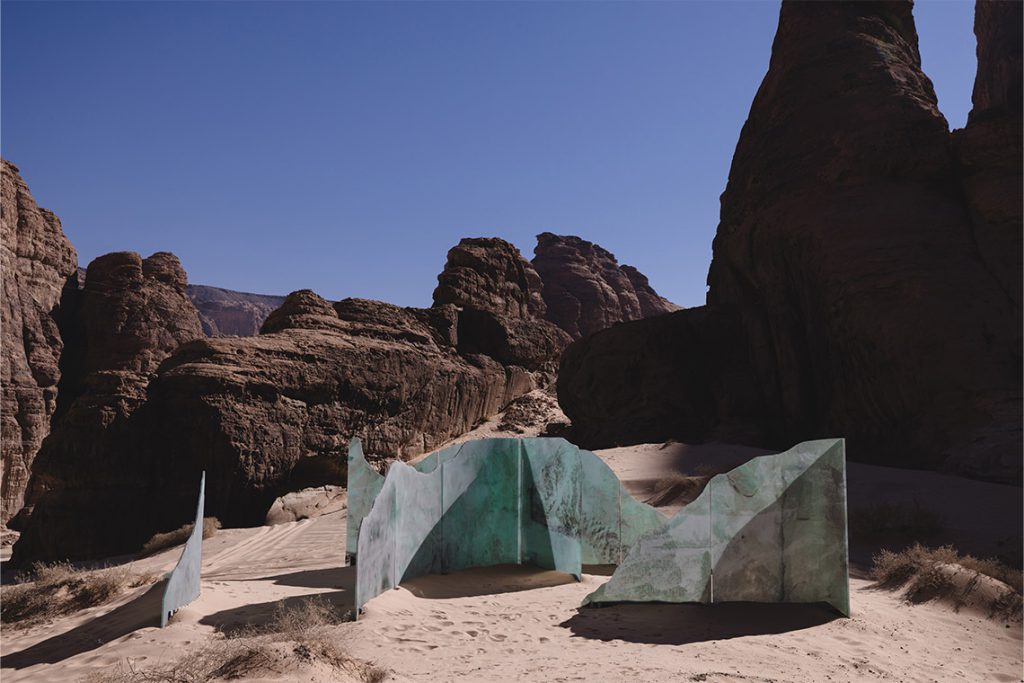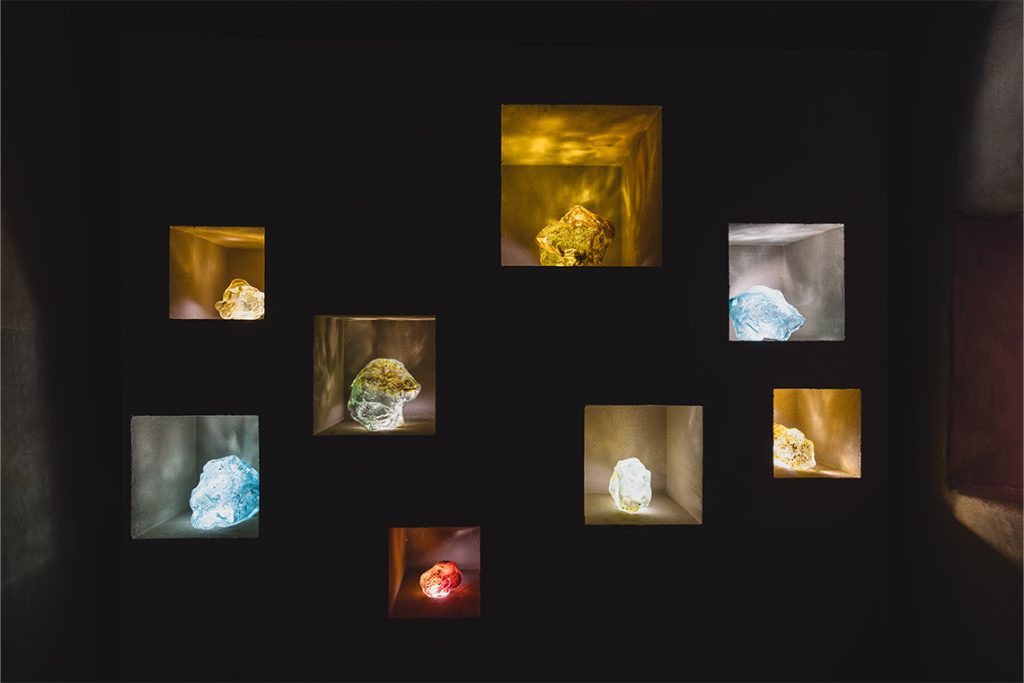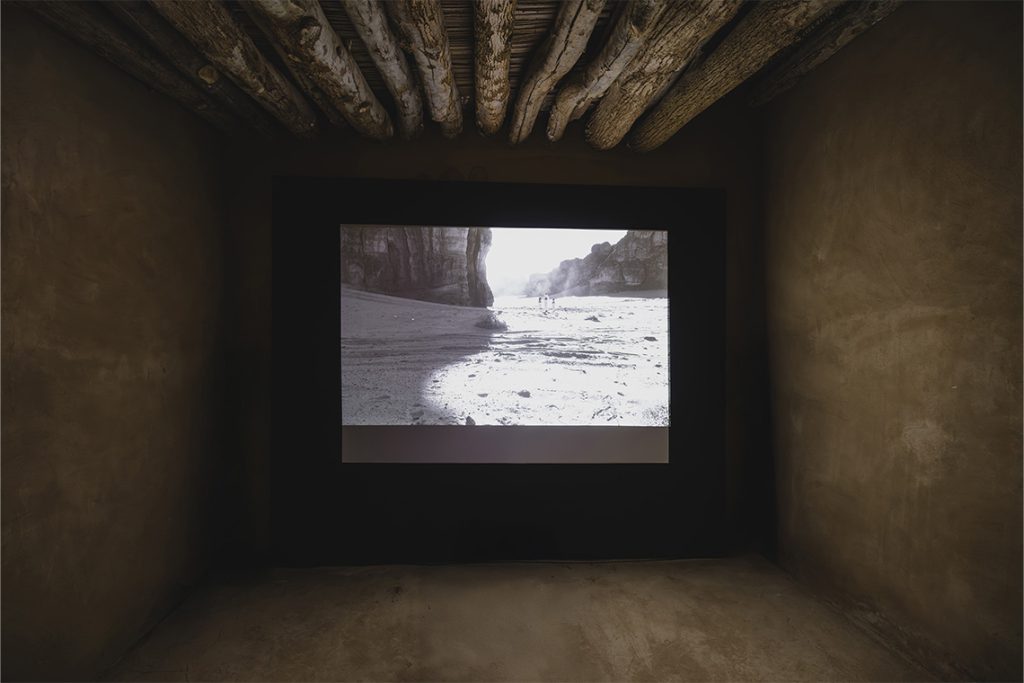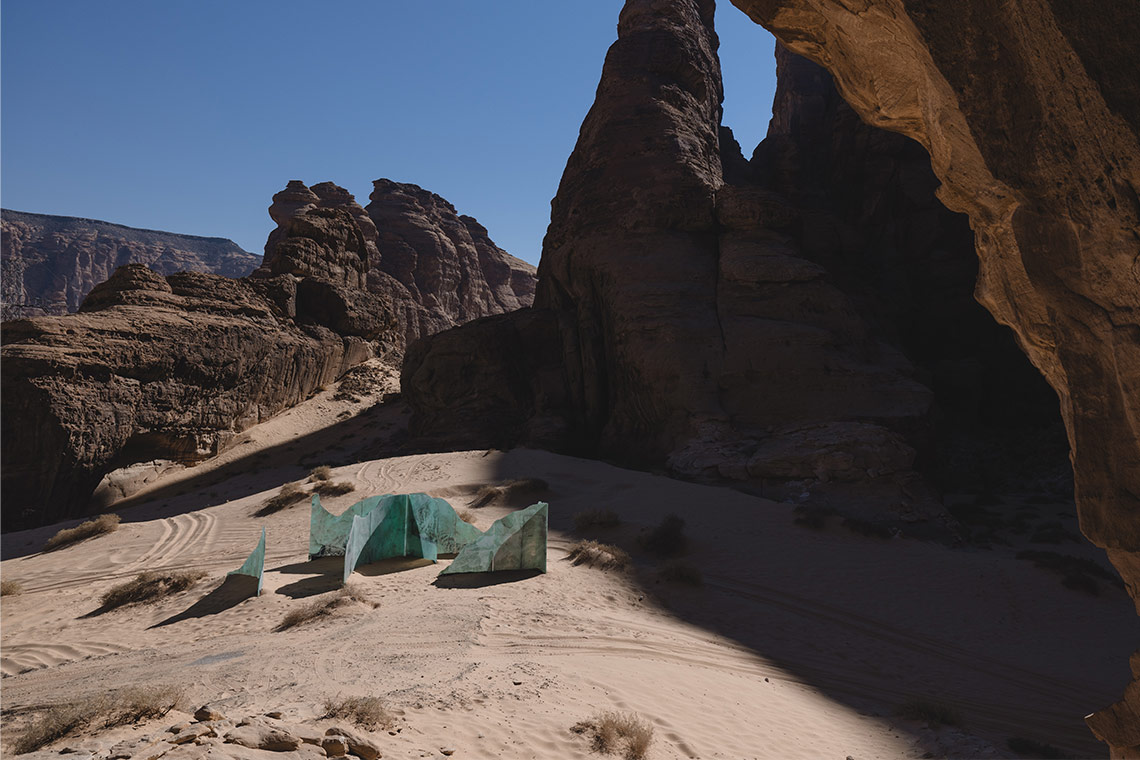Through the interplay of breath and glass, NEUMA – The Forgotten Ceremony revives the ancient practices of the desert, offering a sensory journey that bridges place and ancient practices.
Situated within AlUla’s dramatic canyons at Wadi AlNaam, a stunning glass sculpture rises. Its crystalline form deceives the eye, resembling a glacier in the desert as the light blue hues contrast with the warm khaki sands. NEUMA – The Forgotten Ceremony (2023–24) is the result of a year-long research residency at Villa Hegra curated by Arnaud Morand and Wejdan Reda , where artists Sarah Brahim and Ugo Schiavi worked alongside archaeologists and epigraphists to uncover the faint traces of lost tribes and their heritage, evidence that is now barely perceptible. The culmination of this extensive exploration is a site-specific commission and performance that bridges time, drawing connections between the ancient and the contemporary.
The installation is a ritual in itself – an offering to the land, to the air and to the past. The glass sculptures are shaped by the contours of the desert’s geology, tracing its reformation over time. The glass, delicate yet unyielding, serves as a metaphor for the ancient practices once held here, transmuting the ephemeral breath of life into a tangible form. The setting, Wadi AlNaam, is an ancient landscape of eroded temples and weathered stone, a place where time itself seems to linger. Yet for all its natural grandeur, the installation feels at times like an exercise in spiritual restraint, withholding the very breath it attempts to evoke. Looking at the glass, the cracks mimic the jagged, weathered textures of the mountains, as though the landscape is both reflected and fragmented through this prism.

The heart of NEUMA lies in the idea of breath, the invisible thread that connects all living things. In classical thought, “neuma” is the life force that goes beyond the physical and it is this very energy that is captured in the work’s blown-glass sculptures. Delicate yet powerful, the glass pieces are moulded by the exhalations of the performers who, with their breath, stir the silent entities to life. Alongside the outdoor installation, an indoor exhibition is housed at Dar Tantora, within the historic architecture of AlUla Old Town and offering insight into the work created during the residency.

Nestled within the square vaults of the traditional mud walls are sculptural glass forms, each etched with intricate topographies that serve as an abstract reflection of the serrated ridges of the canyon beyond. The interplay of transparency and opacity within these forms creates a shifting, almost ethereal experience. It is beautiful, certainly, but the beauty feels somewhat passive – a quiet contemplation rather than a visceral experience. The promise of a profound connection between self and terrain, between the material and the spiritual, remains distant, as though the installation’s very subtlety keeps it at arm’s length.

In a separate room, a film projects a performance by AlUla resident Muruj Alemam, in which she recites poetry eulogising the desert and its traditions, and interacts with her children, Dema and Ibrahim. Through the cadence of poetry and reflections on motherhood, she creates a subtle connection to her grandfather’s farm, a place to which her bond is so great that it captures the character of both the landscape and the people who inhabit it. In what amounts to a portrait of profound understanding, the visitor is drawn into this experience to feel the heartbeat of the desert sand and the pulse of its storied past.
By dissolving the conventional boundaries of an exhibition, the film transforms it into a space where history, memory and the present moment exist in fluid harmony. The performance element underlines this tension between presence and absence, with the “forgotten ceremony” enacted with a solemn and deliberate slowness that mirrors the pacing of the installation. There is an invitation to pause, to breathe in rhythm with the surroundings, but it feels more like a suggestion than a necessity.
This project demands patience, inviting contemplation without fully guiding the visitor towards any particular revelation. It speaks to the layered history of AlUla, to the traditions that once defined this ancient settlement yet does so in a way that leaves much unsaid. It perhaps articulates an intentional elusiveness – an artistic expression that leaves space for the viewer to project their own interpretations, to breathe their own meaning into the work.
NEUMA – The Forgotten Ceremony runts until 27 Feb as part of AlUla Art Festival



